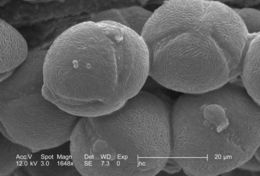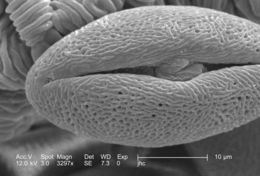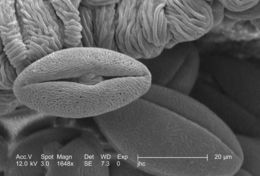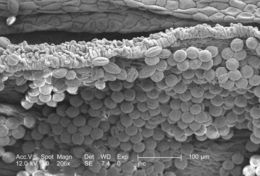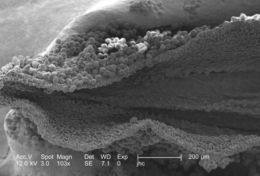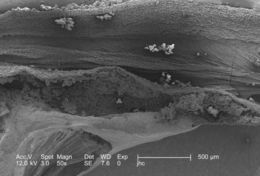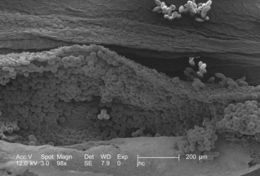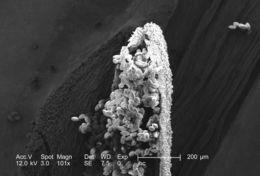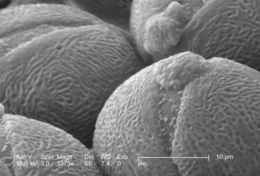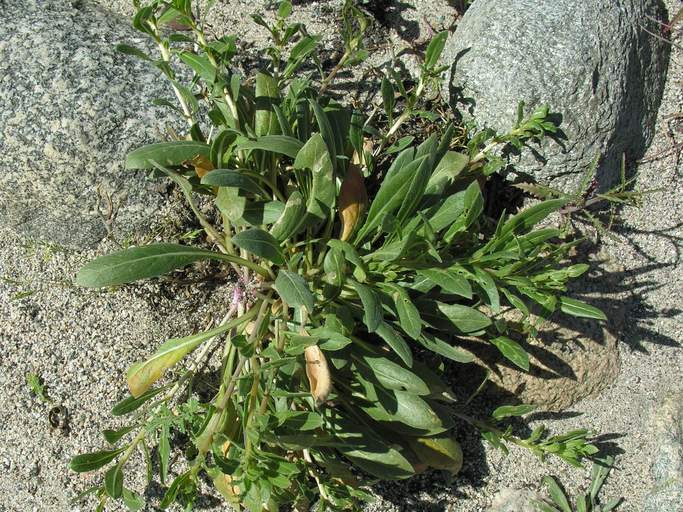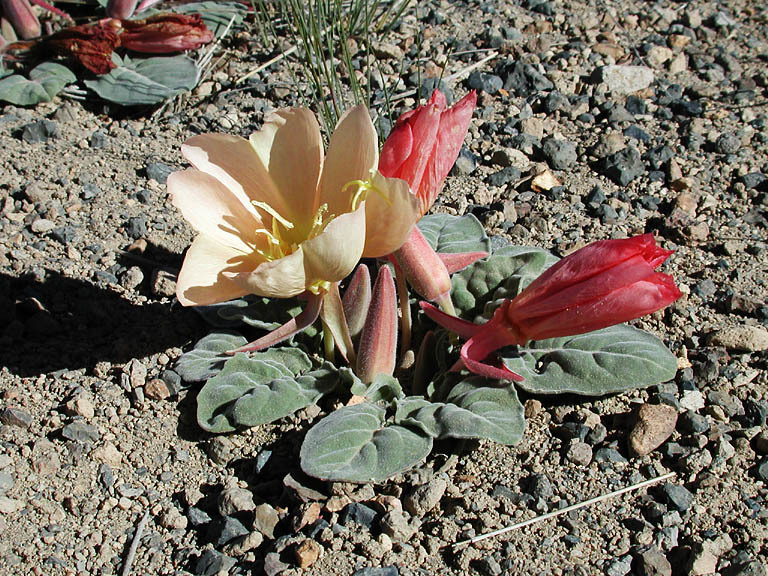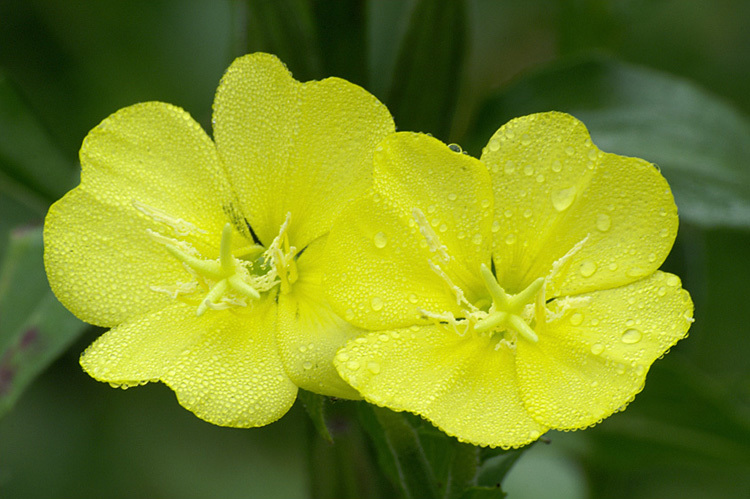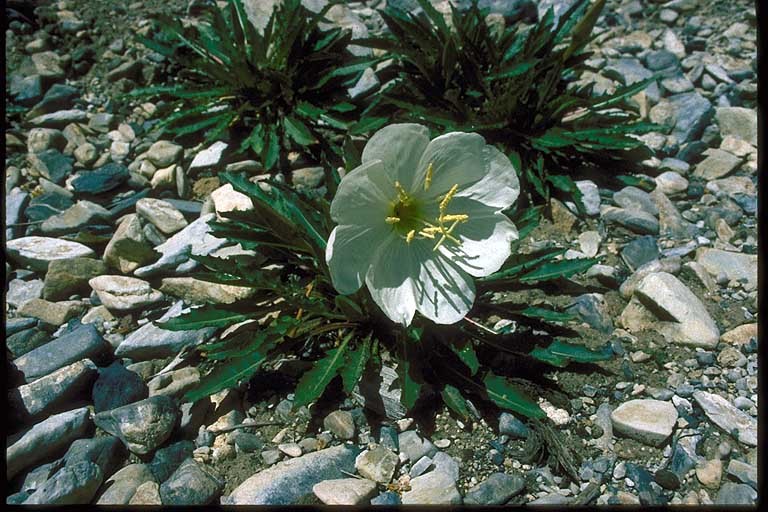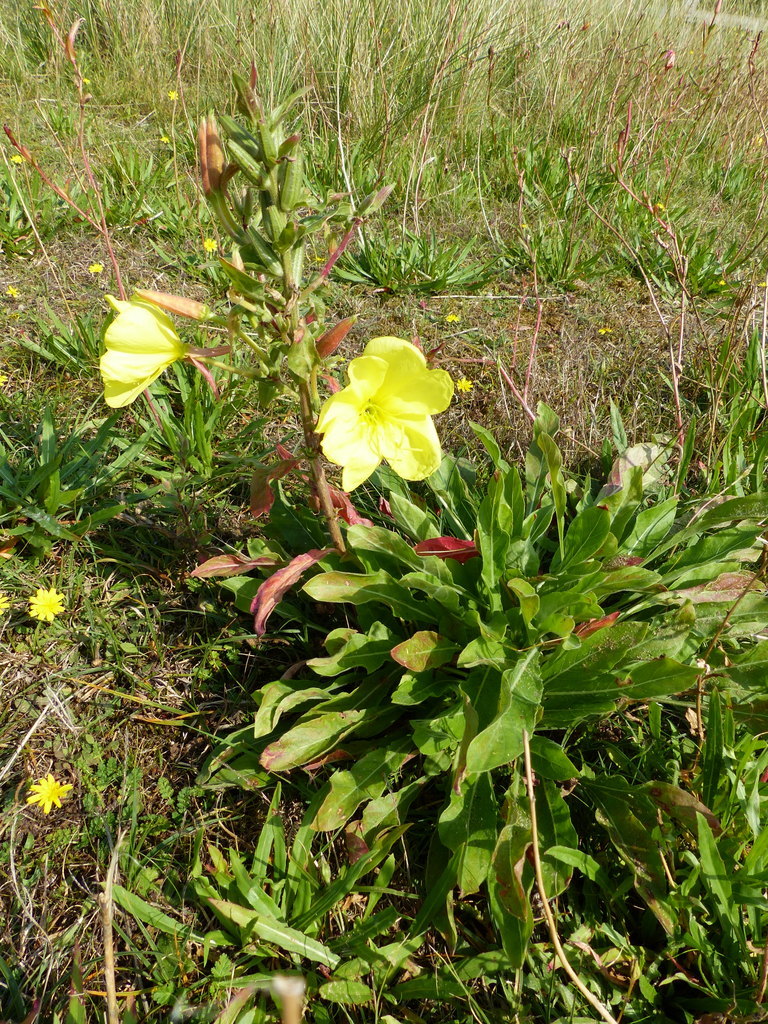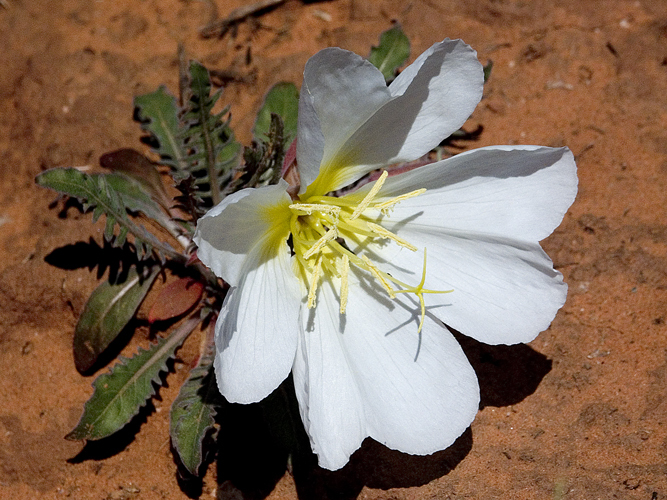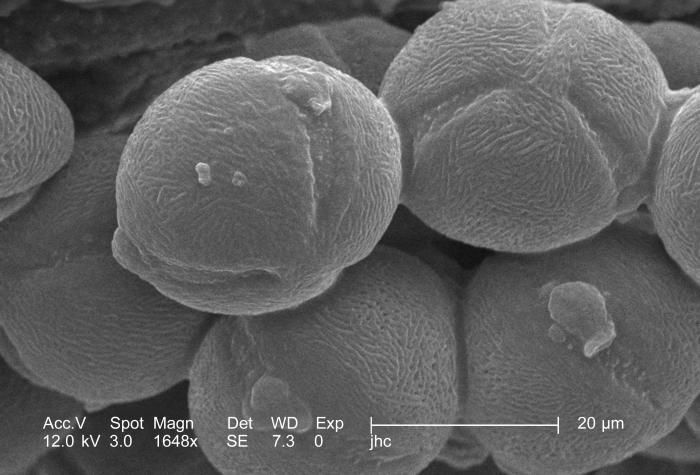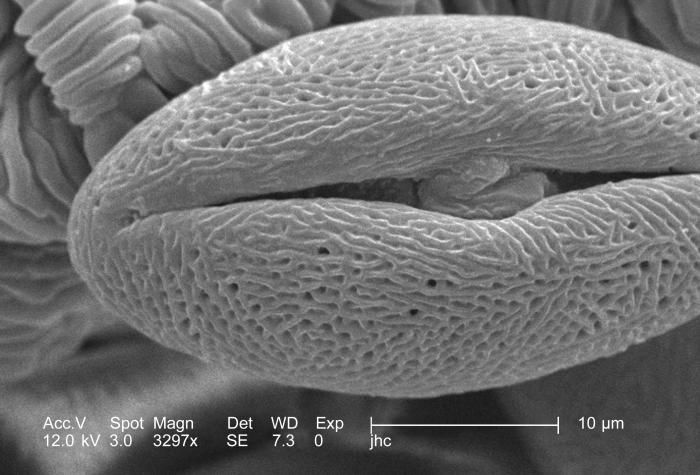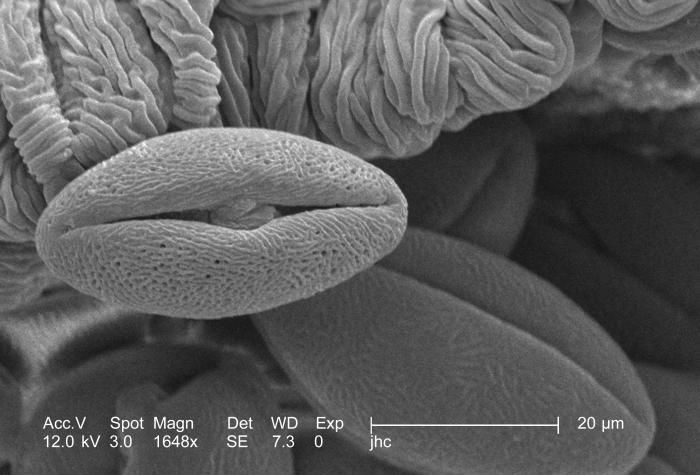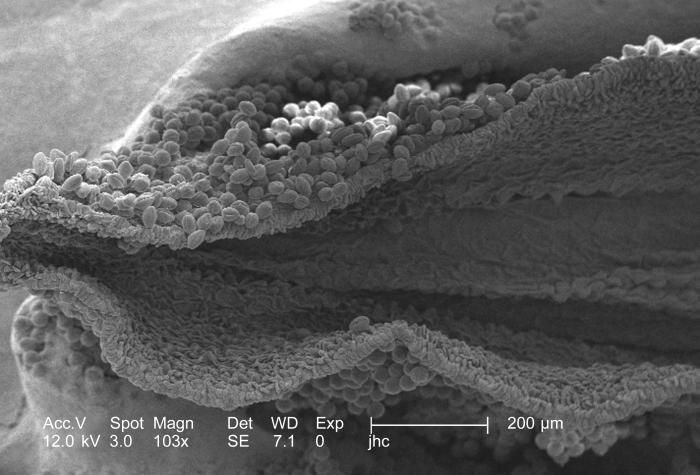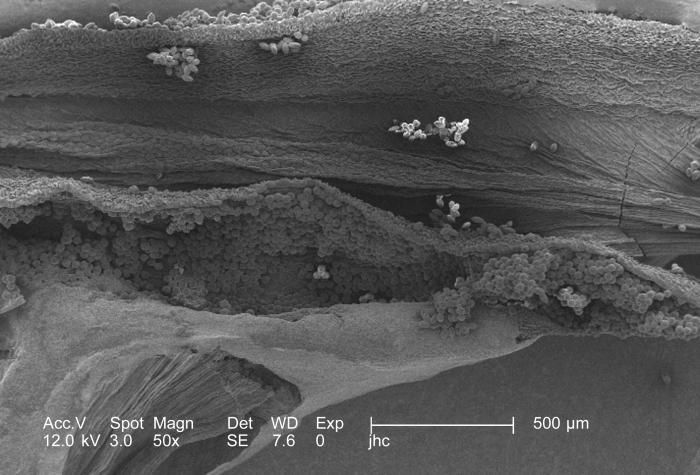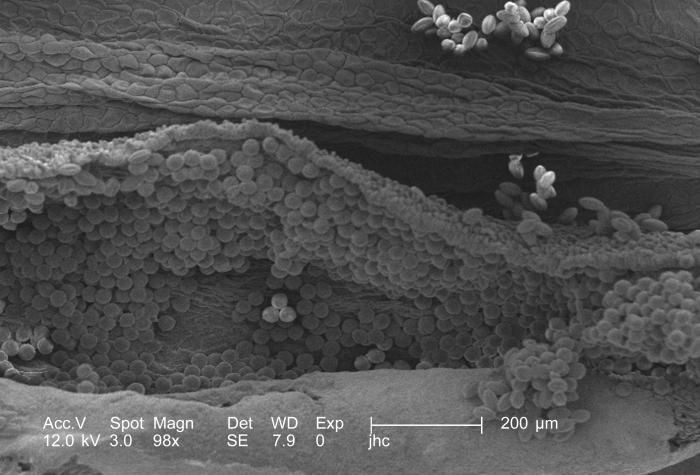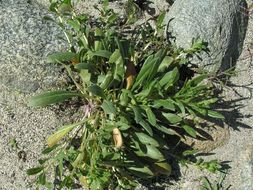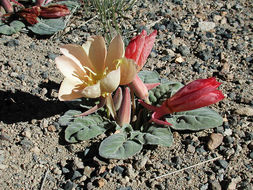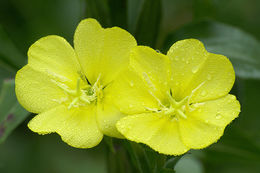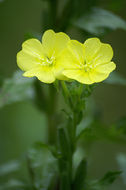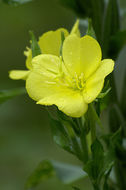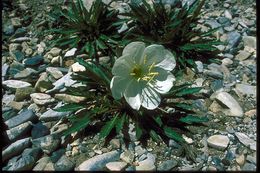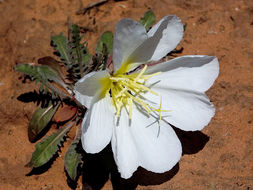-
Couchville Cedar Glade State Natural Area, Davidson County, Tennessee, US
-
Couchville Cedar Glade State Natural Area, Davidson County, Tennessee, US
-
Couchville Cedar Glade State Natural Area, Davidson County, Tennessee, US
-
Couchville Cedar Glade State Natural Area, Davidson County, Tennessee, US
-
Couchville Cedar Glade State Natural Area, Davidson County, Tennessee, US
-
Couchville Cedar Glade State Natural Area, Davidson County, Tennessee, US
-
-
-
-
-
-
-
-
Focal length: 50.0mm; f/8 @ 1/2000 sec
-
Under a high magnification of 1648x, this scanning electron micrograph (SEM) revealed some of the morphologic ultrastructure displayed by a number of pollen grains found within the dehisced, or split open, anther of a yellow "Fireworks" sundrops, Oenothera fruticosa flower. These pollen grains were of the "tricolpate" type of pollen, which means that their outer surface was traversed from pole to pole, by three symmetrically placed furrows. The textured surface also identified these grains as the "reticulate" type. Note the round shape of these grains, indicating that they had yet to undergo a drying process, in order to become ready to be disseminated into the plants environment.Created: 2006
-
Under a very high magnification of 3297x, this scanning electron micrograph (SEM) revealed some of the morphologic ultrastructure displayed by a pollen grain found within the dehisced, or split open, anther of a yellow "Fireworks" sundrops, Oenothera fruticosa flower. This pollen grain was of the "tricolpate" type of pollen, which means that the outer surface was traversed from pole to pole, by three symmetrically placed furrows. The textured surface also identified this grain as a "reticulate" type. Note that the grain's shape was elliptical, indicating that it had undergone a drying process, and was ready to be disseminated into the plants environment.Created: 2006
-
Under a high magnification of 1648x, this scanning electron micrograph (SEM) revealed some of the morphologic ultrastructure found amongst a collection of pollen found within the dehisced, or split open, anther of a yellow "Fireworks" sundrops, Oenothera fruticosa flower. These pollen grains were of the "tricolpate" type of pollen, which means that the outer surface is traversed from pole to pole, by three symmetrically placed furrows. The textured surface also identified this grain as of the "reticulate" type. Note that the grains' shape is elliptical, indicating that they had undergone a drying process, and were ready to be disseminated into the plants environment.Created: 2006
-
Under a magnification of 206x, this scanning electron micrograph (SEM) revealed some of the morphologic ultrastructure found amongst a collection of pollen found within the dehisced, or split open, anther of a yellow "Fireworks" sundrops, Oenothera fruticosa flower. Note the pod-like configuration of the anther, within which reside many pollen grains ready for dissemination into the passing wind, or to become attached to a pollinator such as a bee. Judging by the shape of these pollen grains, it appears that the majority had yet to dry, for the elliptical, "football"-shaped grain, closer to the lip of the anther, represented those that had dried, and the round grains represented those that were still moist.Created: 2006
-
Under a low magnification of 103x, this scanning electron micrograph (SEM) revealed some of the morphologic ultrastructure found amongst a collection of pollen found within the dehisced, or split open, anther of a yellow "Fireworks" sundrops, Oenothera fruticosa flower. Note the pod-like configuration of the anther, within which reside many pollen grains ready for dissemination into the passing wind, or to become attached to a pollinator such as a bee. Judging by the shape of these pollen grains, it appears that the majority had yet to dry, for the elliptical, "football"-shaped grain, closer to the lip of the anther, represented those that had dried, and the round grains represented those that were still moist.Created: 2006
-
Under a very low magnification of 50x, this scanning electron micrograph (SEM) revealed some of the morphologic ultrastructure found amongst a collection of pollen found within the dehisced, or split open, anther of a yellow "Fireworks" sundrops, Oenothera fruticosa flower. Note the pod-like configuration of the anther, within which reside many pollen grains ready for dissemination into the passing wind, or to become attached to a pollinator such as a bee. Judging by the shape of these pollen grains, it appears that the majority had yet to dry, for the elliptical, "football"-shaped grain, closer to the lip of the anther, represented those that had dried, and the round grains represented those that were still moist.Created: 2006
-
Under a low magnification of 98x, this scanning electron micrograph (SEM) revealed some of the morphologic ultrastructure found amongst a collection of pollen found within the dehisced, or split open, anther of a yellow "Fireworks" sundrops, Oenothera fruticosa flower. Note the pod-like configuration of the anther, within which reside many pollen grains ready for dissemination into the passing wind, or to become attached to a pollinator such as a bee. Judging by the shape of these pollen grains, it appears that the majority had yet to dry, for the elliptical, "football"-shaped grains, closer to the lip of the anther, represented those that had dried, while the round grains represented those that were still moist.Created: 2006
-
Magnified 101x, this scanning electron micrograph (SEM) revealed some of the morphologic ultrastructure found amongst a collection of pollen found within the dehisced, or split open, anther of a yellow "Fireworks" sundrops, Oenothera fruticosa flower. Note the pod-like configuration of the anther, within which reside many pollen grains ready for dissemination into the passing wind, or to become attached to a pollinator such as a bee.Created: 2006
-
Magnified 201x, this scanning electron micrograph (SEM) revealed some of the morphologic ultrastructure found amongst a collection of pollen found within the dehisced, or split open, anther of a yellow "Fireworks" sundrops, Oenothera fruticosa flower. The circular shape of these grains means that they still need to further dry before they are ready to be dispersed. The drying will also change their morphology, whereupon, the grains will become elliptical, or "football"-shaped. These pollen grains were of the "tricolpate" type, which means that the outer surface is traversed from pole to pole, by three symmetrically placed furrows.Created: 2006
-
Under a high magnification of 3375x, this scanning electron micrograph (SEM) revealed some of the morphologic ultrastructure found amongst a collection of pollen found within the dehisced, or split open, anther of a yellow "Fireworks" sundrops, Oenothera fruticosa flower. The circular shape of these grains means that they still need to further dry before they are ready to be dispersed. The drying will also change their morphology, whereupon, the grains will become elliptical, or "football"-shaped. These pollen grains were of the "tricolpate" type, which means that the outer surface is traversed from pole to pole, by three symmetrically placed furrows.Created: 2006


